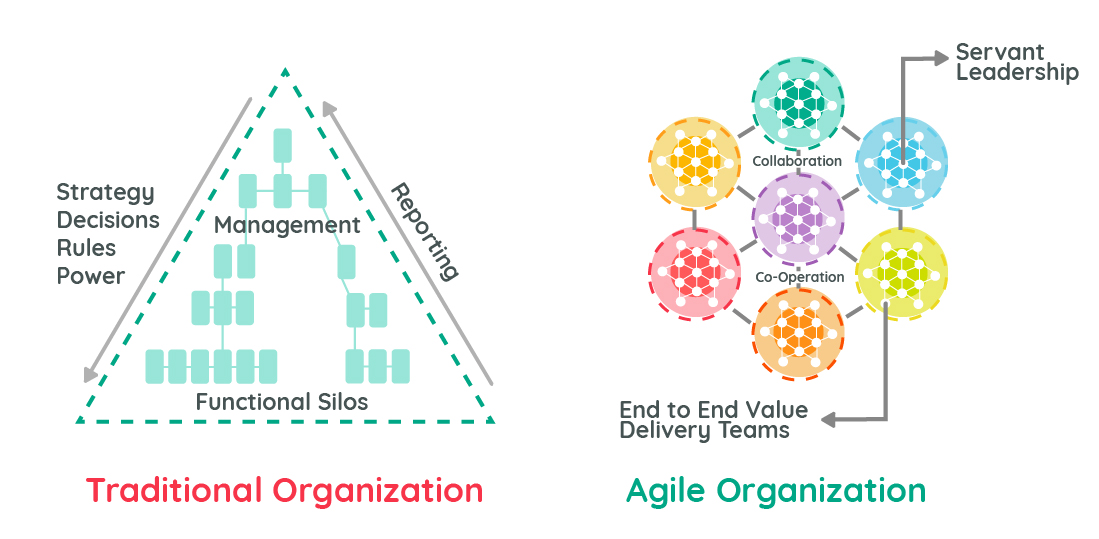Agility is the ability of an organization to adapt to new conditions and to change its direction. The modern service-based format of the production-based economy of the previous century renders the competence of companies to change even stronger than before. This changing economic model and new market conditions have brought about a lot of transformations and it seems that this trend will be maintained. For instance, nowadays, companies need to be customer-oriented, rather than investor-oriented. Another example is that users opt for simple and focused products / services instead of multi-functional ones. In fact, now users do not prefer to purchase anymore as they did before, either. It has become a popular trend to rent and use products or services rather than own them. It is highly likely that this trend will keep increasing and will not be limited to large-scale industries such as housing and cars, but may even extend to sectors that would be hard to imagine such as clothing. It is thus highly likely that new service models will also feature in various fields in the near future.
In this context, to what extent are companies ready for the drastic change that sweeps across all realms of life from consumption habits to economy? The outlook is not so bright for giant organizations that adopts a strong bureaucratic, hierarchical and classical functional structure. Why? This is because companies that employ a pyramid like organization have a structure where the power is concentrated at the top, but value is attempted to be created at the lowest ranks of the pyramid, and thus speed and creativity are crippled due to the number of levels and procedures. Moreover, creation of a product / service that will be marketed by the company depends on separate functional departments (such as marketing, software development, etc.) that focus on different targets / priorities. These departments are responsible for the production of part of a product / service that does not create value to the customers on its own. In other words, no department assumes full responsibility for a product / service from end- to- end. Decision-making procedures are prolonged and priorities clash in such organizations which are not customer-oriented, in which value is divided among multiple parties, and value creation is made dependent, and where a strong chain of command is maintained. More importantly, instead of value creation within the organization, a constant tension is triggered. This is the reason why companies need to change radically, get rid of this cumbersome organizational structure, and evolve into a customer-oriented team-based organization that creates value end to end.

As can be seen in the figure above, when defining an agile company, I emphasize on evolving into a flexible network structure which meets customer expectations and pathways from end to end, where multiple competencies (sales, marketing, software development, etc.) have the same goal as part of the same team, where hierarchy and bureaucracy are minimized. This new structure means the creation of a radically new organization structure with the common aim of customer satisfaction and which is capable of rapidly adapting itself to changes related to its customers and market, and which, in other words, is a living and flexible organization.
For instance, let us take a bank as an example. Let us define a persona who wishes to manage her investments as a potential client of the bank. Let us assume that the aim of this persona is to purchase a comfortable future for herself by evaluating existing gains in the best way possible. Let us create a team that adopts the same aim, and that will create and manage the most suitable banking products, services and solutions for the relevant persona from end to end. Imagine that this team combines various competencies ranging from sales to marketing, and from software development to operation. This team will operate with dedication, develop services and test its ideas in few weeks iterations, and realize continuous creation of value. When we consider the process in a traditional organizational structure of an idea going through the stages of marketing, and then software development after further detailing, and subsequently being referred to the sales and operation, we can predict how fast this recently-formed agile team will evolve into a ever learning and improving organization by creating and testing ideas.
To summarize, the new digital world will favor companies that can keep up with this trend and that adopt rapid change as its main distinctive competency. Therefore, this new era will be dominated by agile companies. However, unfortunately gaining agility is not that easy. In order to gain agility, existing company structures and, more importantly, the culture and working methods should be changed from scratch. What are these changes? Let me conclude my article by summarizing the issue with the table below.

